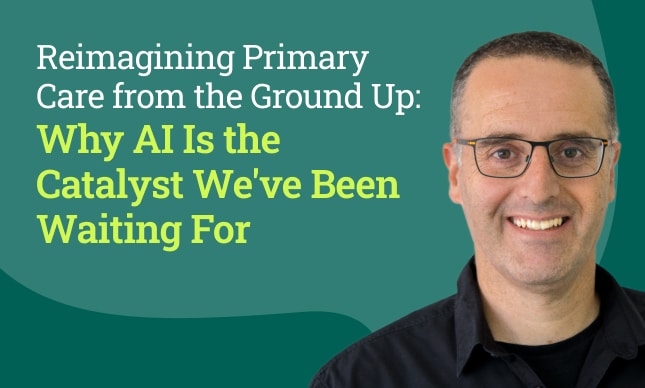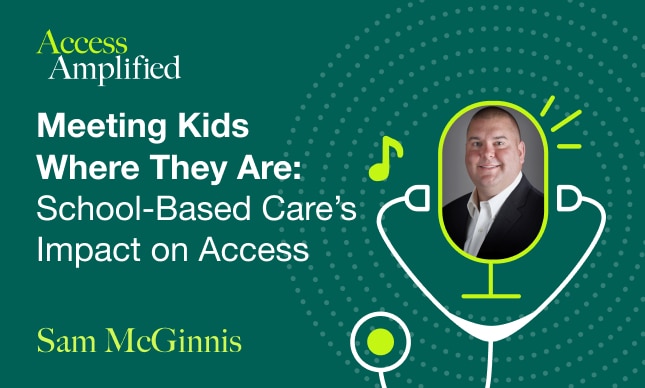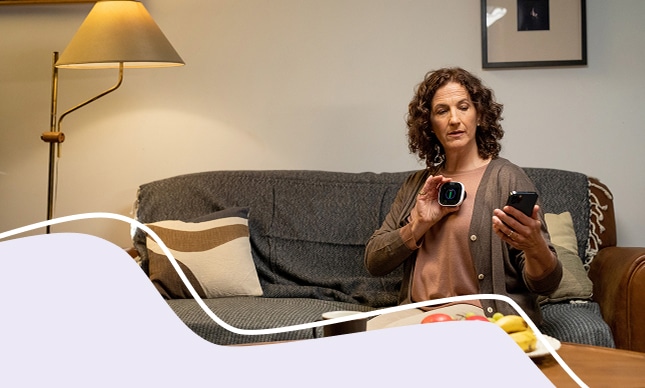Success stories in virtual care engagement

Why is member engagement vital to virtual care’s success, and what strategies are organizations using to achieve it?
This Bright Spots in Healthcare webinar was led by Eric Glazer and featured the following industry experts who shared best practices for member engagement in virtual care:
• Nina Birnbaum, Medical Director of Innovation Acceleration at Blue Shield of California
• Barbara Koch, Senior Vice President, Office of Health Equity at UnitedHealth Group
• Timothy Law, DO, Chief Medical Officer at Highmark
• Douglas Olivo, Director of Rural Care and Telehealth Services at Oklahoma Complete Health, a subsidiary of Centene
• Si Yahav, Director Tyto Engagement Labs at TytoCare
Engagement, experience, and equity
Member engagement is a cornerstone of successful virtual care. In a world of digital noise and fragmented experiences, targeted strategies can provide members with a transformative, effective virtual healthcare experience.
Like having someone in your pocket
Dr. Timothy Law began by explaining the steps Highmark Health has taken to offer members an improved virtual care experience. The organization surveyed members and streamlined their app and communications based on behavioral science principles.
The app goes beyond standard benefits information to offer device integrations and personalized recommendations that promote healthy behaviors. Personalization is the key to managing overall health between doctor’s appointments or after a diagnosis, which can be overwhelming. As Dr. Law explained, “Personalization is like having someone in your pocket to help guide you through this.”
The role of behavioral science
Si Tirosh shared TytoCare’s insights into how healthcare organizations should be thinking about the virtual care journey. Virtual care is a new concept for many members, meaning they lack an existing mental model on how and when to use it. Decision-making is not always a rational process. Therefore, educational information does not necessarily change or drive a behavior as a health plan or provider, and you must look for other approaches to influence members.
Virtual care asks people to change long-standing behaviors and to engage differently with healthcare. User personas are at the root of decisions regarding different engagement techniques. Behavioral science should be used to enhance and better optimize virtual programs.
For example, Medicaid members engage differently with healthcare than commercially fully-insured members. TytoCare has therefore taken a unique approach to tailoring engagement efforts to meet Medicaid members’ needs, focusing on a hassle-free experience that saves time and offers better care to families.
As Si explained, “[Engagement] creates a sense of commitment. [It asks,] How do we make sure that a user says..I want it..I’ll actually utilize this solution?” Quizzes are used to assess the ways in which virtual care meets member needs. Differences in onboarding and communication preferences must also be considered.
Equity strategies
Barbara Koch discussed the need for virtual health equity and the work UnitedHealth Group has done to help promote it. Data-based decisions have helped the organization hone in on several populations that must be prioritized.
Diversifying the healthcare workforce and ensuring care affordability go hand in hand with improving healthcare equity. Social determinants of health should also be factored in, as should the impact of chronic conditions and approaches to their management.
Plan Design
Dr. Law discussed the different types of plan design in the business world. Although virtual health existed before the pandemic, formal plans and strategies were not yet in place. Care access became a major issue during the pandemic, which led Highmark Health to offer virtual healthcare available to all levels of providers and payers. The experience made it clear that virtual care is here to stay.
Virtual healthcare plans can empower providers to provide better care and improve access. Dr. Law shared, “The data shows that we’re decreasing hospital readmissions now that follow-up visits can be done virtually, as well as decreased emergency room admissions.” Virtual care enables a triage system that offers “the right care at the right time, and at the right level.”
Digital therapeutics are being used to treat patients across a broad range of modalities. The key to plan design is ensuring that payers, providers, and members know about virtual care and want it. If not, virtual care plans will not succeed.
Dr. Nina Birnbaum shared that in the past, digital therapeutics sometimes went unused. However, “When you engage with a patient, and you put an effective tool in their hand, they can actually really take a hold of their health and make a real change.”
The guiding principle of plan design is focusing on making virtual care more worthy of our families, and connecting people to high-quality preventive care. Virtual primary care must be linked to behavioral health and speciality care.
Behavioral science insights help drive virtual care adoption. One example is offering $0 copays for virtual visits. Another is providing a health coach for every member to help them effectively navigate the system and coordinate appointments. Integration of care is a must. Specialists, behavioral care providers, and primary care providers should be linked together. Providers must be able to accurately measure vital signs and in-house kits can be used to gather important data.
‘Local’ as a strategy
Keeping healthcare in people’s local communities through virtual care has proven to be one of the most effective ways to provide value-based care. Douglas Olivo discussed how rural healthcare utilizes hybrid models to improve access and quality of care. He shared how school-based telehealth programs help keep kids in school and parents at work. School facilities also typically have broadband access, which can sometimes be a barrier to families accessing virtual care.
Virtual care helps rural providers offer care to their local communities. A hybrid approach in which a human enables a virtual visit drives new engagement, provides easy access to follow up care, and encourages long-term primary care relationships between members and providers, both for students and their families. Results of this approach are promising, with around 80% of visits resolved without the need for in-person follow up care.
Si Tirosh shared more about the impact of virtual care on rural populations. Sanford Health, the largest rural healthcare system in the US, employed TytoCare to bring healthcare into local communities through a hub-and-spoke model. As Si explained, this localized care model “provided better access to both primary and specialty care, closer to home, so there was less travel time and fewer missed appointments.”
A nurse in the community clinic assists members in connecting with the right specialist in the hub and adding a human touch to healthcare technology. Community-based organizations, such as pharmacies and houses of worship, can also be leveraged as healthcare sites.
In conclusion, Barbara Koch explained, “Paired with in-person visits, virtual care can be a major tool in the toolkit” for improving and maintaining members’ overall health.” The key to successful virtual care engagement is understanding what members want out of healthcare, as well as educating and informing them to be able to better manage their care. Timely, accessible care, along with continuous, engaging communication enables efficient patient throughput and promotes patient-centered experiences along every step of the virtual care journey.





